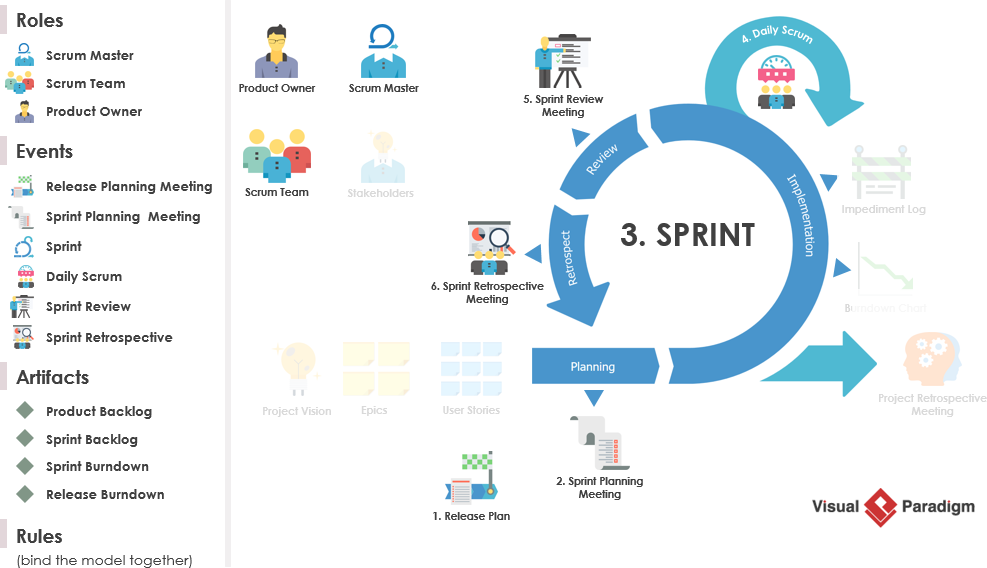The primary goal of Scrum rules is to optimize the development process and reduce wasted time.
Here is a list of the basic rules of Scrum:
- The Development Team is suggested to be 3–9 members
- The Development Team is Cross-functional and self-organized
- Every Sprint is Four Weeks or Less in Duration
- There are no Breaks Between Sprints
- Every Sprint have consistent duration
- Time-box for all Scrum events
- Product Owner is one person, not a committee.
- Once a Sprint begins, its duration is fixed — don’t stretch sprint time or cut sprint time
- The Intention of Every Sprint is “Potentially Shippable” Software
- Every Sprint includes Sprint Planning
- The Sprint Planning Meeting is Time boxed to 2 Hours / Week of Sprint Length
- The Daily Scrum occurs every day at the same time of day
- The Daily Scrum is time boxed to 15 minutes
- Every Sprint includes Sprint Review for stakeholder feedback on the product
- Every Sprint includes Sprint Retrospective for the team to inspect and adapt
- Review and Retrospective meetings are time boxed in total to 2 hours / week of Sprint length
- There is no break between Sprint Review and Retrospective meetings
- The Product Backlog is the single source of requirements
- The Intention of Every Sprint is potential shippable product
- A new Sprint starts immediately after the conclusion of the previous Sprint.
The Scrum framework consists of Scrum Teams and their associated roles, events, artifacts, and rules. Each component within the framework serves a specific purpose and is essential to Scrum’s success and usage. The rules of Scrum bind together the roles, events, and artifacts, governing the relationships and interaction between them as shown in the Figure below:

This post is also available in Deutsch, Español, فارسی, Français, Bahasa Indonesia, 日本語, Polski, Portuguese, Ру́сский, Việt Nam, 简体中文 and 繁體中文.













